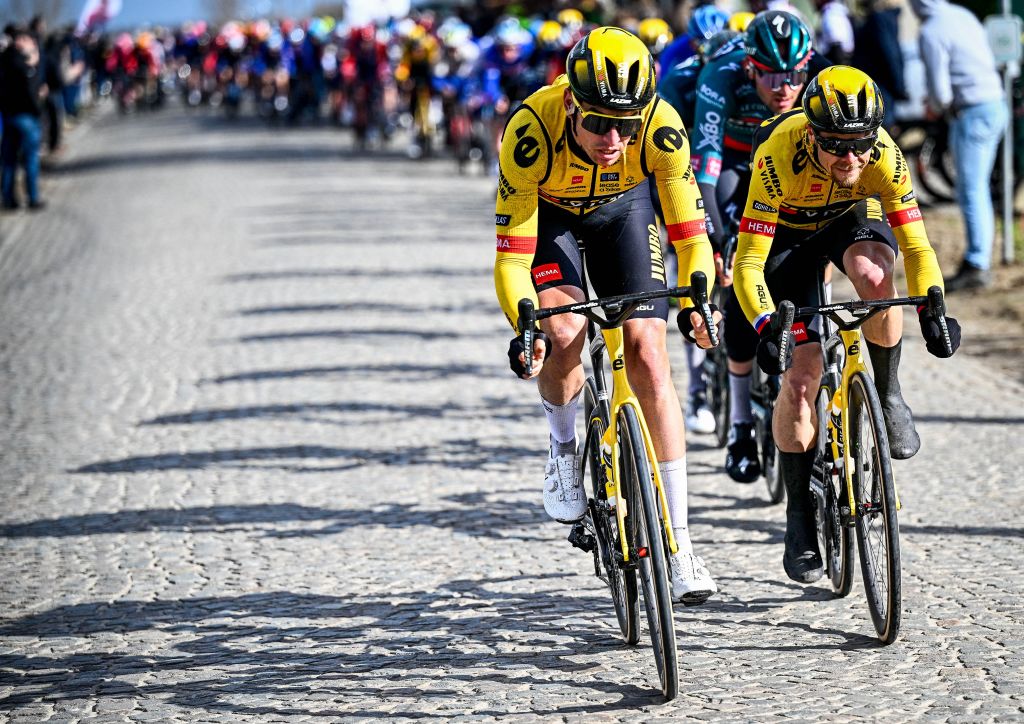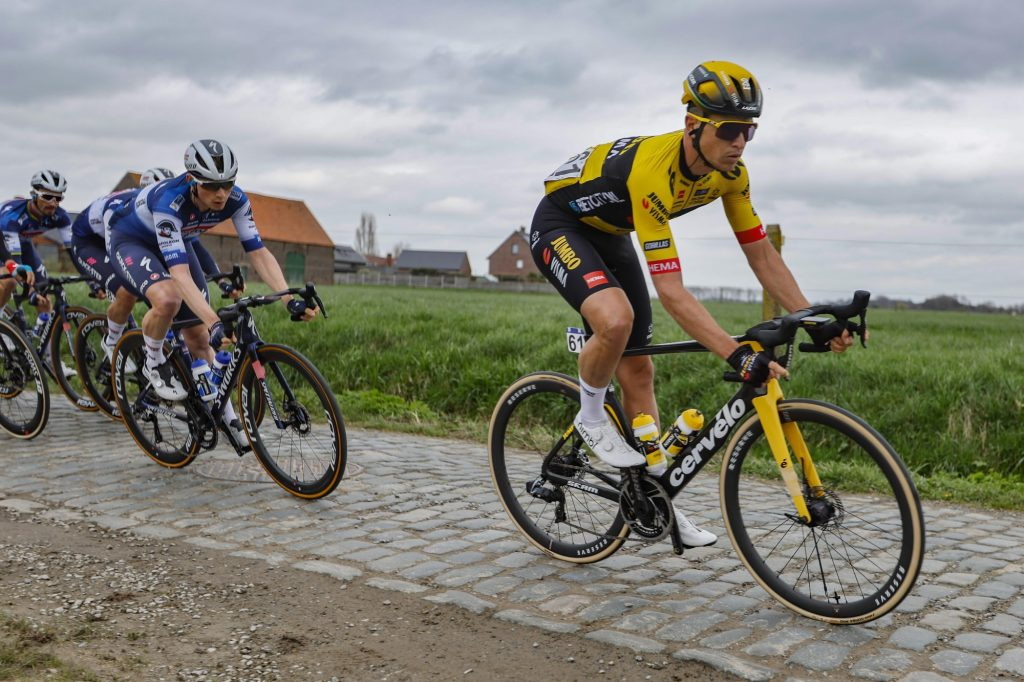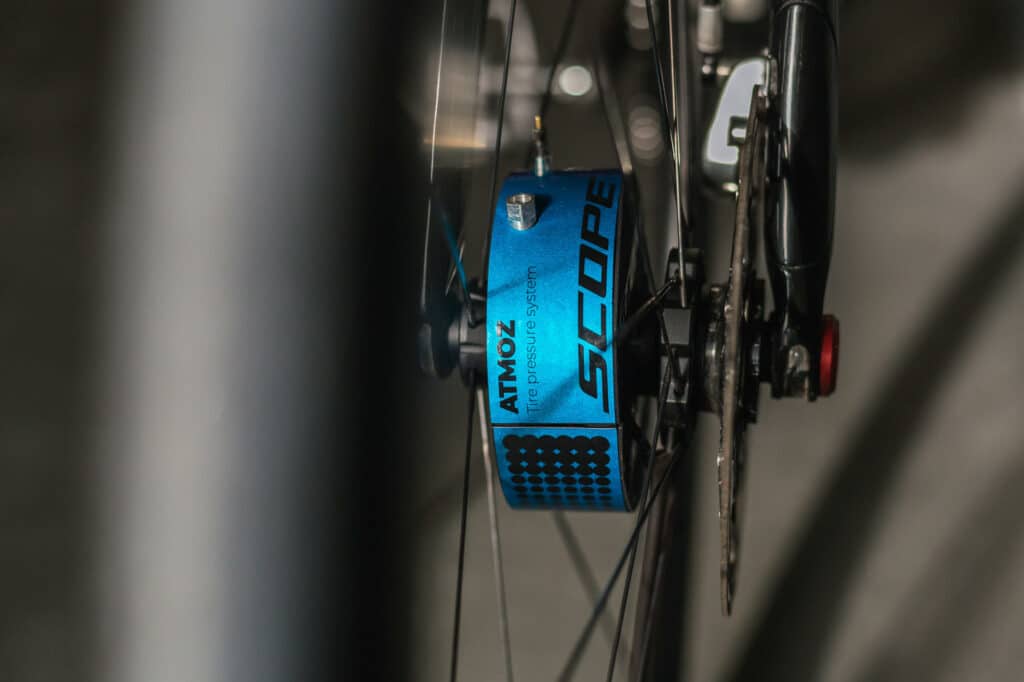
Team DSM and Team Jumbo Visma are set to start at Paris-Roubaix using different adjustable tyre pressure systems this Sunday.
According to WielerFlits, both teams will take to the start line this year with their own adjustable pressure system. This would mark the first time an adjustable tyre pressure system has been used in a WorldTour race.
WielerFlits also reports that 2022 Paris-Roubaix winner Dylan Van Baarle has been testing the Gravaa KAPS system during training and so could, in theory, use it on Sunday.
Jumbo-Visma have still to confirm their line-up and reveal which riders will use the Gravaa system. A decision could come after their final reconnaissance of the Paris-Roubaix cobbles on Thursday.
Team DSM has been testing the Scope Atmoz 'management system' for over a year now. Riders from the team were initially confirmed to be using the system before last year's race but eventually stuck to their stock Dura-Ace wheelsets. The use of the technology was then again put on ice despite claims it would debut at the Tour de France.

At Dwars door Vlaanderen it became apparent that Jumbo-Visma were also testing their own adjustable inflation system in the shape of the KAPS system from Gravaa after Eduardo Affini's Cervelo team bike was spotted fitted with the system. Affini was an eventual DNF in the race.
The system uses Bluetooth and handlebar-mounted controls to allow the riders to lower and raise tyre pressure on the fly, crucially without adding extra drag to the hubs.

A wattage arms race at Roubaix?
Gravaa has published some of its Paris-Roubaix pressure testing findings on its website, and it's clear the terrain of the race has played a key part in the development of the system. There are potentially huge wattage savings from lower tyre pressures over cobbled sectors, paired with the ability to then raise them again on smoother roads.
These savings could represent some seriously low-hanging fruit for the team with a dependable pressure adjustment system that doesn't add extra drag or affect puncture resistance.
Dropping pressure but then losing the ability to raise it again must make teams nervous and racing with underinflated tyres on the races smoother roads would present a problem. Perhaps both teams have ironed out any potential niggles and are ready to push their advantage at this year's race.
We don't know which riders will be using the systems from either team but will report on anything we spot during team recons and the race itself, where Cyclingnews journalists will be reporting in person.







